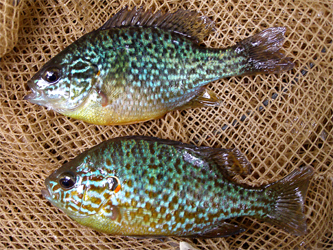The introduction of invasive species, which often differ functionally from the components of the recipient community, generates ecological impacts that propagate along the food web. This review aims to determine how consistent the impacts of aquatic invasions are across taxa and habitats. To that end, we present a global meta-analysis from 151 publications, covering a wide range of invaders (primary producers, filter collectors, omnivores and predators), resident aquatic community components (macrophytes, phytoplankton, zooplankton, benthic invertebrates and fish) and habitats (rivers, lakes and estuaries). Our synthesis suggests a strong negative influence of invasive species on the abundance of aquatic communities, particularly macrophytes, zooplankton and fish. In contrast, there was no general evidence for a decrease in species diversity in invaded habitats, suggesting a time lag between rapid abundance changes and local extinctions. Invaded habitats showed increased water turbidity, nitrogen and organic matter concentration, which are related to the capacity of invaders to transform habitats and increase eutrophication. The expansion of invasive macrophytes caused the largest decrease in fish abundance, the filtering activity of filter collectors depleted planktonic communities, omnivores (including both facultative and obligate herbivores) were responsible for the greatest decline in macrophyte abundance, and benthic invertebrates were most negatively affected by the introduction of new predators. These impacts were relatively consistent across habitats and experimental approaches. Based on our results, we propose a framework of positive and negative links between invasive species at four trophic positions and the five different components of recipient communities. This framework incorporates both direct biotic interactions (predation, competition, grazing) and indirect changes to the water physicochemical conditions mediated by invaders (habitat alteration). Considering the strong trophic links that characterize aquatic ecosystems, this framework is relevant to anticipate the far-reaching consequences of biological invasions on the structure and functionality of aquatic ecosystems. informacion[at]ebd.csic.es: Gallardo et al (2015) Global ecological impacts of invasive species in aquatic ecosystems. Glob Chang Biol DOI: 10.1111/gcb.13004
http://onlinelibrary.wiley.com/doi/10.1111/gcb.13004/abstract








 Las altas temperaturas están provocando que las lagunas y las marismas de Doñana pierdan agua rápidamente
Las altas temperaturas están provocando que las lagunas y las marismas de Doñana pierdan agua rápidamente



